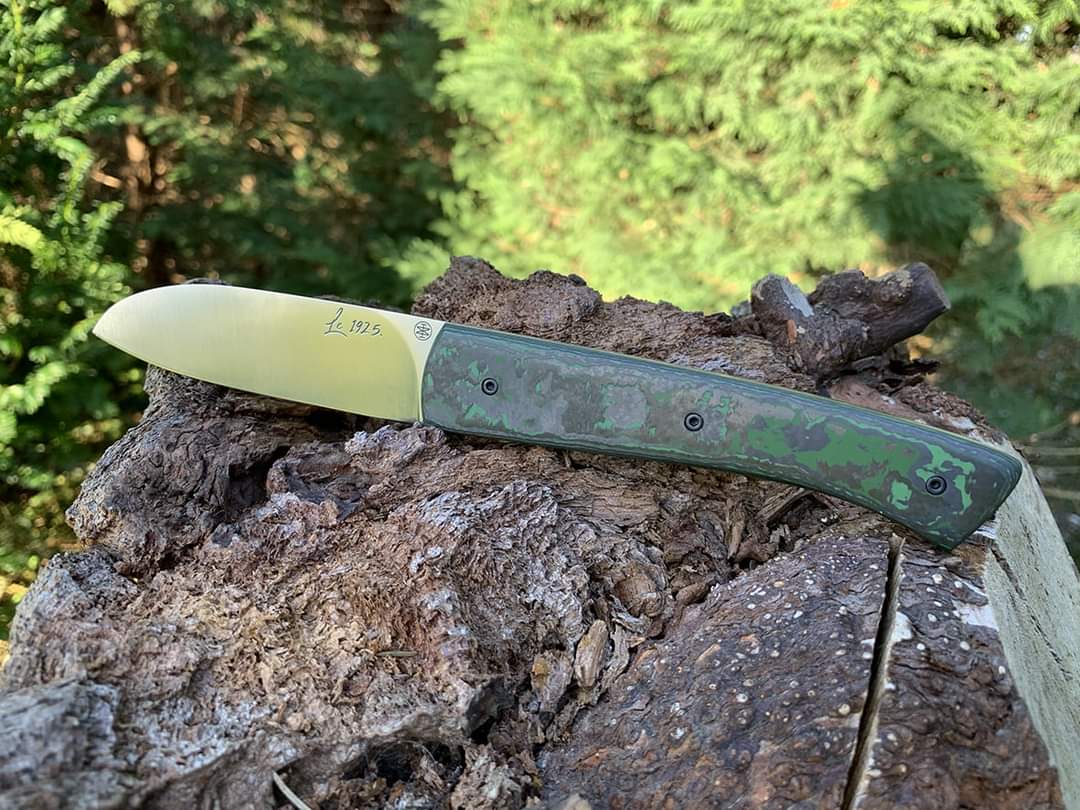Will Power
Gold Member
- Joined
- Jan 18, 2007
- Messages
- 33,586
Regards, Will
The BladeForums.com 2024 Traditional Knife is available! Price is $250 ea (shipped within CONUS).
Order here: https://www.bladeforums.com/help/2024-traditional/
I wouldn't be able to open that one with my hands,thats why the French ones I have are so good,strong but very easy big pinchable grip.Johnnythefox Thanks, it's quite a big knife, around 4"/10cm thick rounded Ebony slabs, no blade play and very sharp as it's fairly thinly ground. I don't mind strongly sprung knives but this is not for the non dextrous, otherwise you could lose a finger! Finish is a bit rough but nothing a bit of sanding can't fix, if you want.
Regards, Will
He was born in Slovakia, then part of Hungarian kingdom. I doubt many say they are Belgian, the official song make much fun of them, because the king Leopold had forbiden them to join the Legion when created.
Tiens t'auras du boudin (3x) Come y' get some blackpudding*
Pour les Alsaciens, les Suisses et les Lorrains For the Alsacians, the Swiss and the Lorrains
Pour les Belges y'en a plus (x2) No more left for Belgians
Ce sont des tireurs au cul They’re shooters in the ass**
* boudin : nickname of the standard bag
** slang for slouch and lazy
Thank you!I enjoy hearing about old family histories like that. Did your grandfather keep his new French name or did he go back to using his old Slovak one?
Thinking about it, it's not too difficult to open but shutting it takes some attention! For instance, most Lags are easy to open but require guided closing-not just to avoid damaging the edge but because they're tough to close- this is how it should be in my view.I wouldn't be able to open that one with my hands,thats why the French ones I have are so good,strong but very easy big pinchable grip.
Marie Taillardat. thanks for the clue!I don’t remember the knife or the maker’s name, but I remember she had a clever play on words on her marketing materials:
Le “savoir-fer” au féminin.
You could probably Google that to find the maker.

I guess I am not the only one who finds the Sabot brand to have very tight backsprings.A tough type with a terrifying snap

TBH..no other than it's a cheese knife.Any more information about Roquefort knive? Or this style? It looks similar to a Aurillac style.

I guess I am not the only one who finds the Sabot brand to have very tight backsprings.
Indeed, this is the conventional wisdom, but the bigger challenge with knives by Le/Au Sabot is the stiffness of the backspring in the open position. They are difficult to get started in closing, but not terribly stiff once past the initial resistance.Right, I read that you have to walk the blade shut, so as the blade does not strike the liner to hard, and possibly hurting the blade edge, there is no stop pin to prevent it from hitting.


For most US citizens there's not much differences between European knives. Here is an easy way to differenciate at least two :
View attachment 1665190 (found somwhere on the 'net)
Indeed, this is the conventional wisdom, but the bigger challenge with knives by Le/Au Sabot is the stiffness of the backspring in the open position. They are difficult to get started in closing, but not terribly stiff once past the initial resistance.
Theoretically the spring should be stiff and hard to close the blade, though easy to open.The strong back spring takes a little to get used to in order to close, but now it is why I like my Sabot Aurillac, a strong spring when open.
Right, while caution has to be used on any slip joint, I feel a little better knowing that the Sabot does not have a weak spring that will close too easily on me.Theoretically the spring should be stiff and hard to close the blade, though easy to open.
Marie Taillardat. thanks for the clue!
Savoir faire = literally “to know to do”, translates to the English “know-how”.I have liked this one from her. Do the play on words mean something like “lady savior faire?” Is there some kind of meaning in the play on words above in
“savior-fer” au feminin? Tried a translation: so maybe feminine know-how.
Savoir faire = literally “to know to do”, translates to the English “know-how”.
Savoir FER = “ to know iron”
Any actual francophones can correct me if I’m wrong.
Good. It is a pun! Blacksmith are often men. Ironing more often a woman's task. Lady's humor!Savoir faire = literally “to know to do”, translates to the English “know-how”.
Savoir FER = “ to know iron”
Any actual francophones can correct me if I’m wrong.
